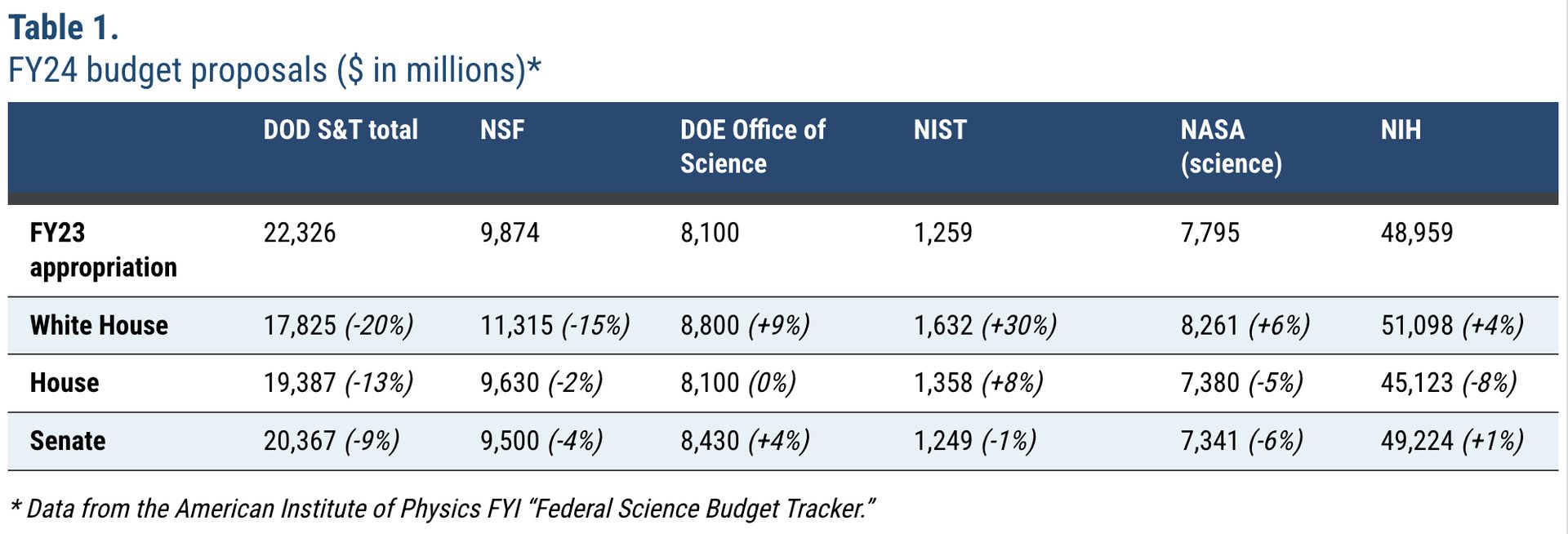
news & trends
C&GM INDUSTRY NEWS:
Federal budget 2024—Turmoil in the House stalls budget negotiations
By Lisa McDonald
Ever since the 118th United States Congress began in January 2023, it has faced some unusual challenges arising mainly from unprecedented turmoil in the House of Representatives.
The first instance occurred on January 3, when the House failed to elect a speaker on the first ballot for the first time in 100 years. It would take four days and 15 ballots before Kevin McCarthy (R-CA) was sworn in as speaker.
For McCarthy to gain the necessary votes to become speaker, he made several commitments to members of the House Republican Conference on the federal budget. These commitments led to a tense standoff between the House, Senate, and White House over the nation’s statutory debt ceiling, which the House refused to raise unless big spending cuts were guaranteed in the fiscal year 2024 budget.
The resulting Fiscal Responsibility Act of 2023, which President Joe Biden signed into law on June 3, suspends the limit on federal debt through Jan. 1, 2025, but requires severe cuts in the fiscal year 2024 budget that disproportionately affect nondefense programs.
As the House and Senate started developing their respective proposals for the federal budget, the House experienced another upheaval when McCarthy was ousted as House Speaker in an October 3 vote. A new speaker, Mike Johnson (R-LA), was elected October 25 on the fourth ballot. Some members of the House Republican Conference are now calling for even steeper cuts to the federal budget beyond what was agreed to by McCarthy and Biden during the debt ceiling negotiations.
As of early December 2023, when this story was written, it is expected that the fiscal year 2024 budget will not be finalized until early 2024. If a decision is not reached by the time the current continuing resolution expires, House Speaker Johnson has pledged that he will not pass any more short-term spending bills and will pursue a full-year stopgap measure instead.
ADVERTISEMENT
A few highlights from the proposals:
Department of Defense
Limits placed on the Department of Defense budget for fiscal year 2024 are less stringent than those on nondefense agencies. However, they will check recent growth in the research, development, test, and evaluation (RDT&E) accounts, which at $144 billion is more than double its fiscal year 2016 level.
The overall RDT&E budget will likely experience a small increase, with House and Senate appropriators requesting increases of 4% and 2%, respectively. However, within this topline, spending is set to plunge for the Science and Technology portfolio under RDT&E, with House and Senate appropriators requesting decreases of 13% and 9%, respectively.
National Science Foundation
While the White House requested an increase of 15% to the current $9.9 billion annual budget of the National Science Foundation, both House and Senate appropriators proposed slight decreases of 2% and 4%, respectively.
Based on these proposals, the final fiscal year 2024 budget for NSF will almost certainly fail to meet the ambitious funding levels laid out for the agency in the CHIPS and Science Act of 2022. For perspective, even if the White House request is met, NSF’s funding will fall short of the CHIPS authorizations for fiscal year 2024 by 27%.
Department of Energy
The White House requested to increase DOE’s budget from $45.8 billion to $52 billion. Both the House and Senate proposals surpass this request, with recommended increases bringing the total budget to $58 billion and $58.1 billion, respectively.
- Office of Science: Senate appropriators propose raising the DOE Office of Science budget by 4% to $8.4 billion, while House appropriators would hold the budget steady at $8.1 billion. These proposals fall short of the White House request to increase the budget by 9% to $8.8 billion. The final budget will likely not reach the funding levels authorized in the CHIPS and Science Act of 2022, meaning some planned initiatives will not take place, such as a major expansion to the Fusion Energy Sciences program. However, most major facility construction projects should receive the amounts requested by the White House.
- Applied energy: As in previous years, the White House is requesting exceptionally large increases for the Office of Energy Efficiency and Renewable Energy (increase of 39%) and the Advanced Research Projects Agency–Energy (increase of 38%), which neither the House nor Senate proposals support. On the other hand, the White House requested that the Office of Nuclear Energy’s budget be rolled back from $1.77 billion to $1.56 billion, which Senate appropriators agreed with while House appropriators recommended a small increase to $1.78 billion.
- National Nuclear Security Administration: The NNSA budget would significantly increase from the current $22.2 billion under the various spending proposals for fiscal year 2024, with the White House, Senate, and House proposals all recommending increases to about $23.9 billion. Senate appropriators are seeking significantly more funding for R&D and nonproliferation programs than House appropriators, with a focus on inertial confinement fusion, advanced manufacturing, and advanced computing.
National Institute of Standards and Technology
While House appropriators propose increasing the $1.3 billion annual budget of the National Institute of Standards and Technology by 8%, Senate appropriators are requesting a 1% decrease.
NIST’s budget is once again serving as a repository for earmarked projects unrelated to the agency’s mission, as has happened since Congress removed a decade-long moratorium on earmarking funds in 2021. The House and Senate proposals are filled with earmarks for projects in congressmembers’ home states while undershooting the amount requested by the White House to address severe maintenance backlogs at NIST’s own facilities.
National Aeronautics and Space Administration
The House and Senate proposals for NASA’s fiscal year 2024 science budget are almost perfectly reversed from the White House request. House and Senate appropriators propose cuts of 5% and 6%, respectively, while the White House requests an increase of 6% to the current $25.4 billion budget.
The Mars Sample Return mission is one point of contention between the House and Senate proposals. NASA’s prioritization of this mission has already led it to defer requests for other projects, and its ballooning cost will likely push back future missions. The House proposal meets the White House request to increase funding for the Mars Sample Return mission, while Senate appropriators propose a severe cut for the mission and broach the prospect of cancellation.
National Institutes of Health
Senate appropriators are seeking a 1% increase to $49.2 billion for the National Institutes of Health while House appropriators are requesting a decrease of 8% to $45.1 billion. Significantly, the House proposal includes funding cuts of 66% for the new Advanced Projects Agency for Health and 17% for the Centers for Disease Control and Prevention. In contrast, the Senate proposal keeps the funding levels for these entities in line with fiscal year 2023 levels.
For more information on the federal budget, visit the American Institute of Physics FYI “Federal Science Budget Tracker.”
National Institute of Standards and Technology
While House appropriators propose increasing the $1.3 billion annual budget of the National Institute of Standards and Technology by 8%, Senator appropriators are requesting a 1% decrease.
NIST’s budget is once again serving as a repository for earmarked projects unrelated to the agency’s mission, as has happened since Congress removed a decade-long moratorium on earmarking funds in 2021. The House and Senate proposals are filled with earmarks for projects in congressmembers’ home states while undershooting the amount requested by the White House to address severe maintenance backlogs at NIST’s own facilities.
National Aeronautics and Space Administration
The House and Senate proposals for NASA’s fiscal year 2024 science budget are almost perfectly reversed from the White House request. House and Senate appropriators propose cuts of 5% and 6%, respectively, while the White House requests an increase of 6% to the current $25.4 billion budget.
The Mars Sample Return mission is one point of contention between the House and Senate proposals. NASA’s prioritization of this mission has already led it to defer requests for other projects, and its ballooning cost will likely push back future missions. The House proposal meets the White House request to increase funding for the Mars Sample Return mission, while Senate appropriators propose a severe cut for the mission and broach the prospect of cancellation.
National Institutes of Health
Senate appropriators are seeking a 1% increase to $49.2 billion for the National Institutes of Health while House appropriators are requesting a decrease of 8% to $45.1 billion. Significantly, the House proposal includes funding cuts of 66% for the new Advanced Projects Agency for Health and 17% for the Centers for Disease Control and Prevention. In contrast, the Senate proposal keeps the funding levels for these entities in line with fiscal year 2023 levels.
For more information on the federal budget, visit the American Institute of Physics FYI “Federal Science Budget Tracker.”
Years of slashed infrastructure spending culminates in crumbling concrete crisis in the UK
While infrastructure failure is sometimes due to design flaws, more often than not, failure occurs because materials are pushed to operate beyond their intended lifespan. Such is the case right now with reinforced autoclaved aerated concrete (RAAC) buildings in the United Kingdom.
RAAC is a lightweight and porous construction material that consists of about 80% air. It has several advantages over traditional concrete, such as being easier to transport and machine, but it easily absorbs water due to its porous structure. This property makes RAAC less durable than traditional concrete, so it only lasts for about 30 years in contrast to 50–100 years for reinforced concrete.
In the U.K., RAAC was used in the construction of hundreds of buildings between the 1950s and mid-1990s, including schools, hospitals and theaters. But the popularity of RAAC faded following the publication of numerous studies showing the material’s risks, i.e., loss of strength when exposed to moisture and/or polluted air.
In recent years, buildings containing RAAC have started to experience structural failures, such as roof collapses. In 2022, a government agency issued a safety briefing on the situation. Yet over the past decade, the U.K’s Conservative-led government has slashed spending on infrastructure, as detailed in The New York Times.
At the end of August 2023, the problem of crumbling RAAC infrastructure reached a head when the U.K. government published a list of schools that were confirmed to contain RAAC.
This announcement led to more than 100 schools having to shut down or close off areas only days before the new school year started.
Though many in the media blamed RAAC itself for the failures, construction experts pushed back against this characterization of the material.
“The problem with these panels is not so much the material itself. It’s the fact that they’ve been used well beyond their expiry date,” says Juan Sagaseta, a reader in structural robustness at the University of Surrey, in a Wired article.
Learn more about the history of RAAC and the ideal way to use it in application.
Headline
Text

Caption.
Credit:
Text
Headline
Text
C&GM Industry News
Headline
Text

Caption

Headline
Text

Caption

Headline
Text

Caption. Credit: M

Headline
Text

Caption

Headline
Text

Caption. Credit: M

Headline
Text

Caption

Headline
Text

Caption. Credit: M

Headline
Text

Caption



